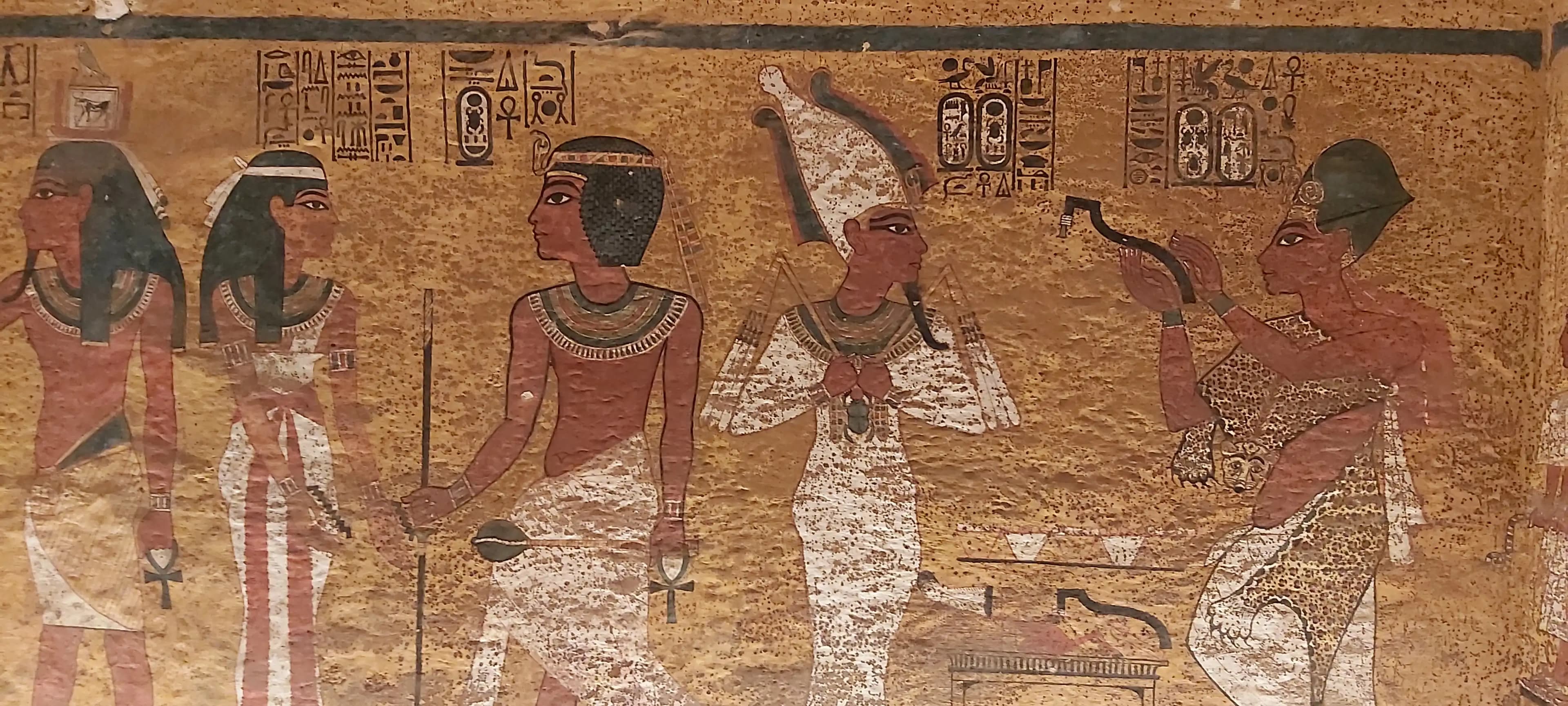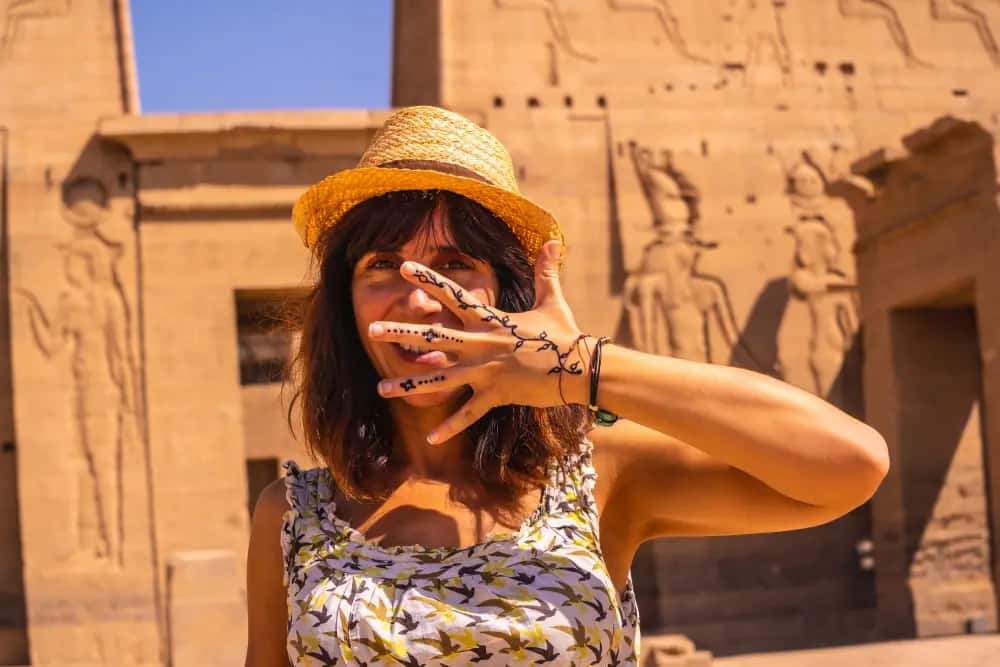
Egypt, the land of the pharaohs, has a rich and fascinating history that has captivated the world for thousands of years. But beyond the iconic pyramids and Sphinx lies a deeper and more complex story of a civilization known as Kemet. The history of Kemet Egypt spans over 3,000 years, and its people were pioneers in art, architecture, religion, and politics. From the reign of the first pharaoh to the fall of the New Kingdom, the story of Kemet Egypt is one of triumphs and tragedies, of powerful rulers and ordinary people, and of cultural and technological advancements that still awe us today. In this comprehensive guide, we will explore the fascinating history of Kemet Egypt and discover how this ancient civilization shaped the world we live in today. So, join us on this journey back in time as we uncover the secrets of one of the greatest civilizations in human history.
The Early Dynastic Period, also known as the Archaic Period, is considered the beginning of the civilization of Kemet Egypt. It was during this period that the first pharaohs emerged and unified the country. The unification of the country was attributed to Menes, the first pharaoh of Kemet Egypt. The Early Dynastic Period was characterized by the establishment of a centralized government, the development of hieroglyphics, and the construction of monumental architecture.
The pharaohs of the Early Dynastic Period were considered divine rulers who had absolute power over their subjects. They were responsible for ensuring the prosperity and stability of the country. The pharaohs also played a crucial role in the development of religion and mythology in Kemet Egypt. The gods and goddesses of Kemet Egypt were believed to have a direct influence on the lives of the people, and the pharaohs were considered the intermediaries between the gods and the people.
The Early Dynastic Period was a time of great cultural and technological advancements in Kemet Egypt. The development of hieroglyphics allowed for the recording of historical events and the expression of complex ideas. The construction of monumental architecture, such as the Step Pyramid of Djoser, served as a testament to the power and wealth of the pharaohs.
The Old Kingdom is considered the golden age of Kemet Egypt. It was during this period that the pharaohs built the iconic pyramids of Giza and established a complex bureaucracy to manage the affairs of the country. The Old Kingdom was characterized by a highly centralized government, a well-organized society, and a flourishing economy.
The pharaohs of the Old Kingdom were considered god-kings who had absolute power over their subjects. They were responsible for ensuring the prosperity and stability of the country. The pharaohs also played a crucial role in the development of religion and mythology in Kemet Egypt. The gods and goddesses of Kemet Egypt were believed to have a direct influence on the lives of the people, and the pharaohs were considered the intermediaries between the gods and the people.
The Old Kingdom was a time of great cultural and technological advancements in Kemet Egypt. The construction of the pyramids of Giza, which were built as tombs for the pharaohs, served as a testament to the power and wealth of the pharaohs. The development of mathematics and astronomy allowed for the accurate measurement of time and the prediction of astronomical events. The art of the Old Kingdom was characterized by a highly stylized and idealized form that served to glorify the pharaohs and their achievements.
The Middle Kingdom is considered a period of transition in the history of Kemet Egypt. It was during this period that the country experienced political and social upheaval, which led to the rise of a new dynasty of pharaohs. The Middle Kingdom was characterized by a decentralized government, a more egalitarian society, and a renewed interest in religious and cultural traditions.
The pharaohs of the Middle Kingdom were considered the protectors of the people and the defenders of the country. They were responsible for ensuring the prosperity and stability of the country. The pharaohs also played a crucial role in the development of religion and mythology in Kemet Egypt. The gods and goddesses of Kemet Egypt were believed to have a direct influence on the lives of the people, and the pharaohs were considered the intermediaries between the gods and the people.
The Middle Kingdom was a time of great cultural and technological advancements in Kemet Egypt. The construction of monumental architecture, such as the Temple of Karnak, served as a testament to the power and wealth of the pharaohs. The art of the Middle Kingdom was characterized by a more naturalistic and realistic form that reflected the diversity and complexity of the society.
The New Kingdom is considered the period of greatest expansion and power in the history of Kemet Egypt. It was during this period that the pharaohs established a vast empire that extended from Nubia in the south to Syria in the north. The New Kingdom was characterized by a highly centralized government, a powerful military, and a flourishing economy.
The pharaohs of the New Kingdom were considered the god-kings who had absolute power over their subjects. They were responsible for ensuring the prosperity and stability of the country. The pharaohs also played a crucial role in the development of religion and mythology in Kemet Egypt. The gods and goddesses of Kemet Egypt were believed to have a direct influence on the lives of the people, and the pharaohs were considered the intermediaries between the gods and the people.
The New Kingdom was a time of great cultural and technological advancements in Kemet Egypt. The construction of monumental architecture, such as the Temple of Luxor, served as a testament to the power and wealth of the pharaohs. The art of the New Kingdom was characterized by a highly realistic and naturalistic form that reflected the diversity and complexity of the society.
The Late Period is considered a period of decline and instability in the history of Kemet Egypt. It was during this period that the country experienced political and social upheaval, which led to the decline of the pharaohs and the rise of foreign powers. The Late Period was characterized by a weakened government, a fragmented society, and a decline in cultural and technological advancements.
The pharaohs of the Late Period were considered the rulers of a weakened and fragmented country. They were responsible for maintaining the stability and security of their territories. The pharaohs also played a crucial role in the development of religion and mythology in Kemet Egypt. The gods and goddesses of Kemet Egypt were believed to have a direct influence on the lives of the people, and the pharaohs were considered the intermediaries between the gods and the people.
The Late Period was a time of limited cultural and technological advancements in Kemet Egypt. The art of the Late Period was characterized by a highly stylized and idealized form that reflected the decline of the society.
The Ptolemaic Period is considered the period of foreign rule in the history of Kemet Egypt. It was during this period that the country was ruled by the Ptolemaic dynasty of Greek origin. The Ptolemaic Period was characterized by a highly centralized government, a powerful military, and a flourishing economy.
The pharaohs of the Ptolemaic Period were considered the rulers of a country that was heavily influenced by Greek culture and traditions. They were responsible for maintaining the stability and security of their territories. The pharaohs also played a crucial role in the development of religion and mythology in Kemet Egypt. The gods and goddesses of Kemet Egypt were believed to have a direct influence on the lives of the people, and the pharaohs were considered the intermediaries between the gods and the people.
The Ptolemaic Period was a time of great cultural and technological advancements in Kemet Egypt. The construction of monumental architecture, such as the Library of Alexandria, served as a testament to the power and wealth of the pharaohs. The art of the Ptolemaic Period was characterized by a fusion of Greek and Egyptian styles that reflected the diversity and complexity of the society.
The legacy of Kemet Egypt is still felt today in many aspects of our modern world. The art, architecture, and mythology of Kemet Egypt have influenced countless cultures and civilizations throughout history. The development of hieroglyphics and mathematics has had a profound impact on the field of science and technology.
Kemet Egypt also played a crucial role in the development of religious and philosophical traditions. The monotheistic religion of Judaism has roots in the mythology and theology of Kemet Egypt. The Greek philosopher Plato was heavily influenced by the philosophy and mythology of Kemet Egypt.
Despite its lasting legacy, Kemet Egypt is often misunderstood and misrepresented in popular culture. Many people believe that Kemet Egypt was a primitive and superstitious civilization, but in reality, it was a highly advanced and sophisticated society. The pyramids of Giza, for example, were not built by slaves but by skilled workers who were well-compensated for their labor.
Another misconception about Kemet Egypt is that it was a homogeneous society, but in reality, it was a diverse and multicultural civilization. The people of Kemet Egypt were of various ethnicities and spoke different languages.
Conclusion
In conclusion, the history of Kemet Egypt is a fascinating and complex story of a civilization that has had a profound impact on the world we live in today. From the reign of the first pharaoh to the fall of the New Kingdom, the story of Kemet Egypt is one of triumphs and tragedies, of powerful rulers and ordinary people, and of cultural and technological advancements that still awe us today. The legacy of Kemet Egypt is felt in many aspects of our modern world, and it serves as a testament to the enduring power and influence of this ancient civilization.
“In my opinion, I believe a good writer makes content easy to read, and entertains the reader, making comprehension effortless. Egypt is a country that truly has it all. Its rich history, stunning landscapes, and friendly people make it a must-visit destination for any traveler. I hope you'll have the opportunity to experience it for yourself.
By Egypt Travel Blogger
Embark on an extraordinary 5-day travel with our Cairo and Luxor Tour. Reserve your spot now and relish a complimentary ...
$ 599 | Per Person

Indulge in luxury aboard the MS Mayfair Nile cruise between Luxor and Aswan. Book now an amazing Nile Cruise vacation. ...
$ 799 | Per Person